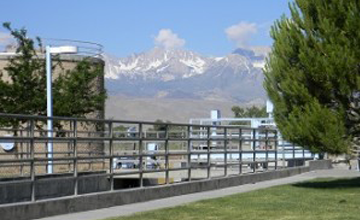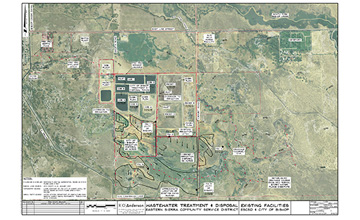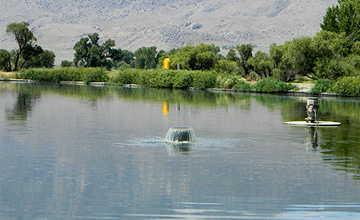Water and Wastewater Infrastructure

At R.O. Anderson, our Water and Wastewater Infrastructure group has the capabilities to design and permit infrastructure related projects which range from simple extensions of storm, sewer, and water mains to complete design, analysis, environmental clearance, and permitting of complex sewer, water, and storm drainage systems.
We routinely use WaterCAD to model water systems and have a lot of experience with:
- Complex designs of multiple wells, storage tanks, pressure zones and booster pumps
- Sewage collection and transmission designs including lift stations, force mains and gravity mains
- Designed, modeled, and permitted non-conventional pressure sewer collection systems and septic tank effluent pumping systems (STEP systems)
- Collection, gravity transmission, and detention with or without treatment
A variety of software programs/routines are used to model water, sewer and storm drainage infrastructure. R.O. Anderson has successfully assisted clients in remote areas where public sewer and established water sources are not available. As a result, our team has experience in well development and ground-water treatment, as well as design of standard and alternative individual sewage disposal systems. Further, for larger developments, we can assist with the design and permitting of package sewage treatment plants and effluent disposal through reuse. Our infrastructure group is also experienced in performing initial surveys of the condition of the existing asphalt, inputting this information into the pavement maintenance software (e.g., MicroPaver in our case), then making specific recommendations on for rehabilitation projects to that best use and optimize available budget dollars.
We Are Highly Qualified In Water & Wastewater Infrastructure Design
Success Story
Eastern Sierra Community Services District: Plant Expansion and Study



Eastern Sierra Community Services District: Plant Expansion and Study



The Problem:
The Eastern Sierra Community Services District needed to determine economical options to increase the treatment and disposal capacity to accommodate the projected growth at the Bishop Paiute Tribe. Early in the process it was determined that elevated levels of nitrogen were present in the groundwater monitoring wells downgradient of the existing evaporation/percolation ponds and effluent irrigation areas. Therefore, in addition to treatment and disposal of additional flow, the study also addressed nitrogen removal from existing flows to lessen the degradation of the groundwater.
The Solution:
We completed the preliminary design for a number of different treatment and irrigation options. Options were evaluated in several areas including: cost; reliability; performance; and preliminary environmental factors and the findings were presented to ESCSD.
The Results:
Nitrogen may be removed in the treatment process or through careful and proper irrigation, or a combination of both methods. Through discussions with staff at the Lahontan Regional Water Quality Control Board (LRWQCB) concerning this project, it was determined that they will be enforcing antidegradation water quality standards in the Owens Valley whereby the proposed new discharge must not degrade groundwater from the existing background levels of 1 to 2 mg/L total nitrogen. Historically, LRWQCB has only enforced the beneficial use standards (less than 10 mg/L total nitrogen) and not the more stringent antidegradation standards. In order to allow total nitrogen above the existing quality the LRWQCB must make findings to support allowing the higher levels. The findings that are expected to be pursued to support limited degradation of the groundwater include: technical feasibility; cost; and public benefit.
